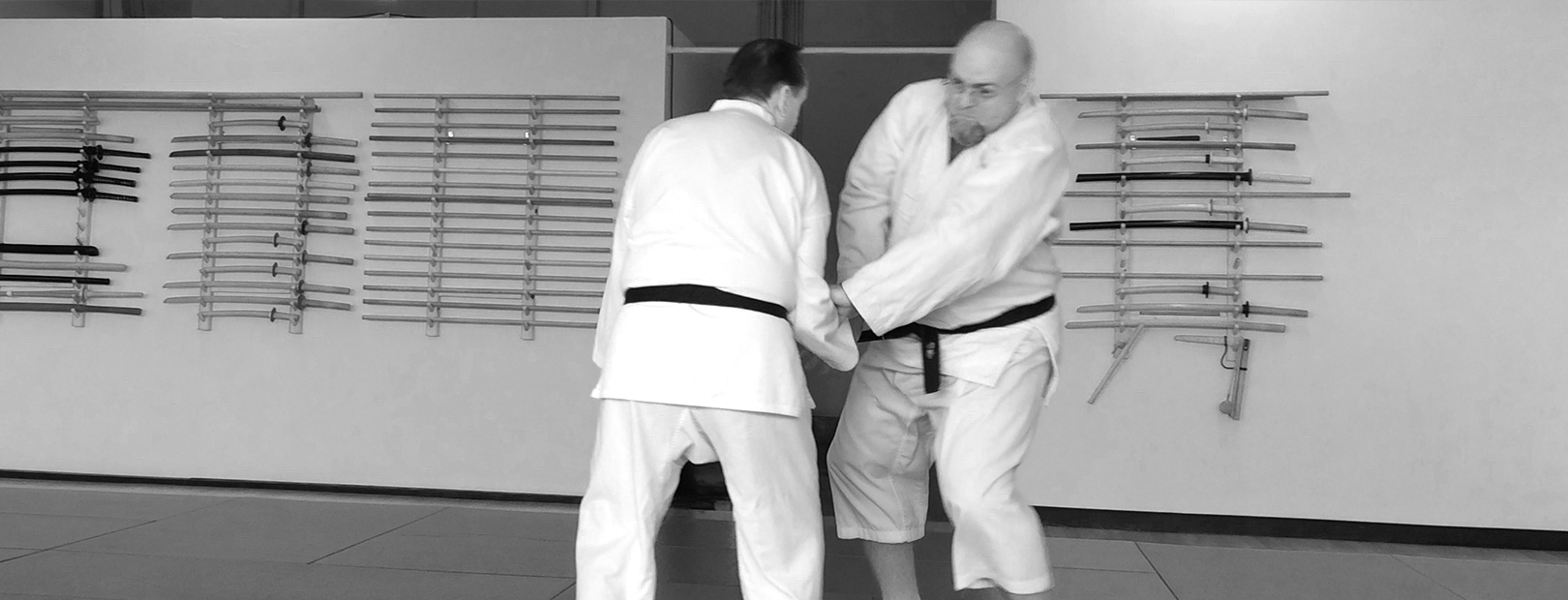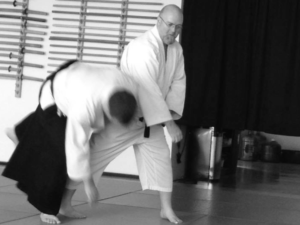Jiyushin-ryu Aikibudo comprises bio-mechanically efficient techniques that work by undermining an opponent’s posture and redirecting the momentum of attacks. Since many of the techniques result in a throw, the first thing students learn is how to safely fall or roll. Training consists of solitary and paired exercises, weapons, and multiple-attacker scenarios for more advanced students. While striking is necessary for training purposes, Jiyushin-ryu Aikibudo is not primarily a pugilistic art like Karate or Boxing.
What we do isn’t quite the Aikido most people are accustomed to seeing (especially if they watch a lot of movies), nor is it quite Judo, but it shares elements of both along with other influences. Rather than attempt to explain what we do in depth here, we recommend you visit the dojo, watch a class, chat with our senior dojo members, and experience what we do for yourself.
Our Aikibudo system is a synthesis of the teachings of Kano Jigoro (founder of Judo), Ueshiba Morihei (founder of Aikido), and Tomiki Kenji (8th dan Judo, 8th dan Aikido, and Waseda University professor) as handed down to us by our teacher C. E. Clark.
“If a technique will not work for the smallest person against the largest person with minimum force and speed, it is not being practiced properly or it is not a viable technique. Large, fast, and strong people should not rely on these assets because there is always someone bigger, faster, and stronger. We know that we all are less capable of strong athletic skills as we grow older. We must practice principles that do not require great strength and acrobatic skills while young in order to attain the skill necessary to overcome hardness with softness when we are older.”
— C. E. Clark, Jiyushinkai Founder and Chief Instructor


